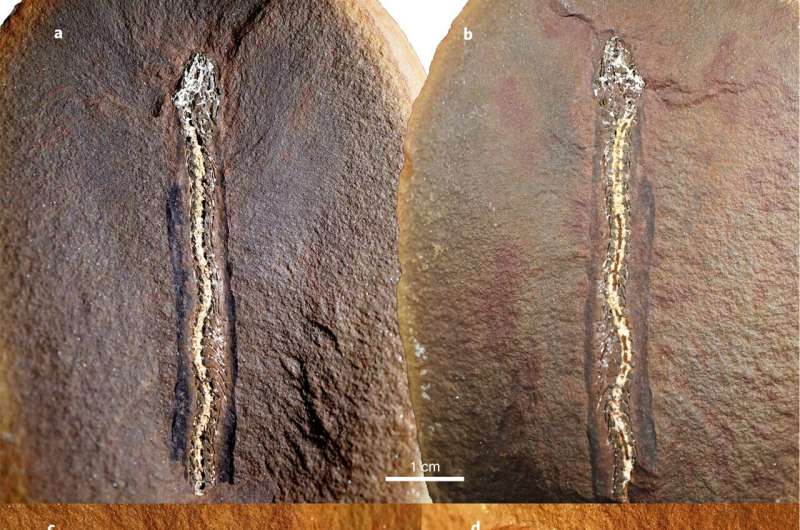March 29, 2022 report
Snake-like fossil lacking forelimbs but with hind limbs may represent transitional evolution

A trio of researchers with the National Museum of Natural History, Smithsonian Institution, the University of Calgary and Carleton University, respectively, has found a snake-like fossil that may represent a creature in transition from four legs to none. In their paper published in the journal Nature Ecology & Evolution, Arjan Mann, Jason Pardo and Hillary Maddin describe the fossil they found and why they believe it helps to explain how animals such as snakes lost their limbs.
Prior research has shown that after animals evolved to walk on land, some of the four-legged creatures evolved in ways that resulted in loss of their limbs—modern snakes are a prime example. In this new effort, the researchers found a fossilized creature that may represent a step in that process.
Dubbed Nagini mazonense, the fossil is believed to represent both a new genus and species belonging to a group known as molgophids. It was approximately 10 centimeters in length and had no forelimbs or even a pectoral girdle. It did have hind legs, feet and four toes, however, which is why the researchers believe it represents a transitional creature.
The researchers found two of the fossilized specimens in rock at the Francis Creek Shale in Illinois. Rocks in the area are well known for containing fossilized remains of ancient creatures. The specimens found by the researchers are believed to be approximately 308 million years old. Prior research has suggested that creatures who lost their limbs also developed elongated body types, which is also a feature found in N. mazonense. The researchers also found indentations in the rock around the fossil that they believe were made by the soft body parts of the creature—they showed it had a round snout and nothing in the parts of the body where forelimbs might have existed.
The researchers suggest the loss of forelimbs indicates that N. mazonense relied primarily on sidewinding as a means of locomotion and likely rarely used its hind legs. They also note that the ancient creature was not an ancestor of modern snakes, but it might help scientists to learn more about how they lost their limbs.
More information: Arjan Mann et al, Snake-like limb loss in a Carboniferous amniote, Nature Ecology & Evolution (2022). DOI: 10.1038/s41559-022-01698-y
Journal information: Nature Ecology & Evolution
© 2022 Science X Network





















